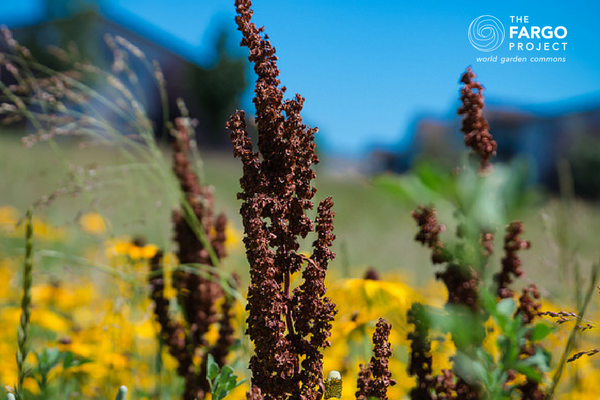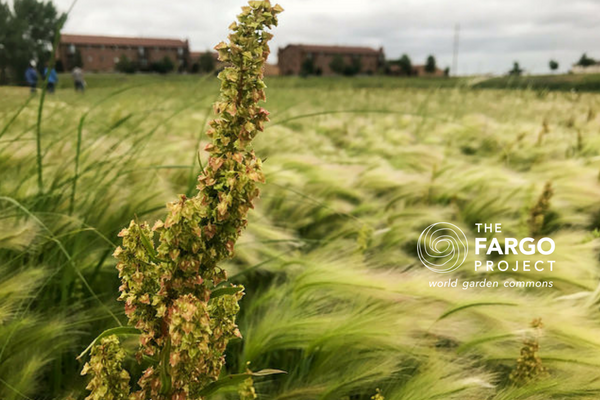In 2012 the Rabanus Park stormwater basin looked like the rest of the stormwater basins in the city: short grass, yellow with dandelions in the spring, and home to a few geese. In short, quite ugly. Today, the World Garden Commons basin is becoming a home to a bouquet of prairie grasses, flowers, pollinators, songbirds, and wetland plants that hold shape into the fall and even in winter.
Going native with the landscape has many ecological and aesthetic benefits, and World Garden Commons is the perfect setting for residents to experience the perennial beauty of diverse native grasses and flowers.
A native landscape provides long-term cost savings on fertilizer, watering, and mowing. The deep roots of prairie grasses bind carbon captured from the atmosphere into the soil, combating climate change, improving degraded soils and water infiltration, and creating a habitat for pollinators and birds.
While a mature native landscape is low maintenance, it takes up to three to five years for a new site to establish. At World Garden Commons “going native” started in 2013 when the Park District simply stopped mowing at the site. In 2015, Blaine Keller of Prairie Restorations began in earnest to prepare the basin for a diversity of new native plants.

2012 view of Rabanus basin with short, mowed lawn
In the spring of 2016, Jesse Riley, a Ph.D. candidate in natural resource management, tilled 25 test plots to assess the optimal vegetation seed mix based on establishment, resisting encroachment, hardiness, and durability for stormwater basins. The seed plots present different flowers each season and each year as the plots mature. One season white flowers may dominate; in another year, during the same season, yellow may be the primary color.
While walking through the site this spring, Blaine identified aster, purple prairie clover, prairie smoke, black-eyed susan, cordgrass, milkweed, bull rush, foxtail barley, slender wheat grass, sweet grass, silverweed, yarrow, and nettle.
Because it takes time for native plants to mature, Blaine and Prairie Restoration will continue onsite maintenance. The height and density of weed cover determines if it’s more advantageous to mow to prevent weeds from seeding or if weeding by hand will suffice. It also determines when a scheduled burn will stimulate growth of native grasses and wildflowers.
The next steps for World Garden Commons and the Fargo Project are to train others to differentiate between the desired prairie flowers, grasses, and wetland plants, and the undesirable weeds. The hope is that once others learn to identify the plants, they would feel compelled to participate in the hand weeding that promotes the diversity of native plants in the basin.









